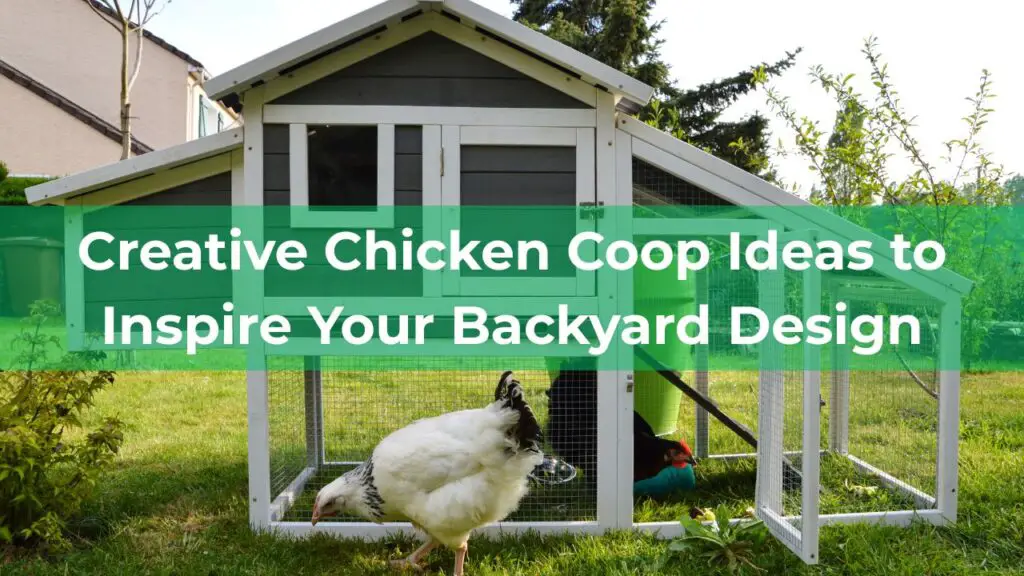Creating a stunning garden can be both fun and rewarding, but having a solid plan is key to making it a reality. From selecting the right plants to arranging features like paths and patios, garden planning designs help you visualize your ideal outdoor space. Let’s roll up our sleeves and get into the nitty-gritty of turning your garden dreams into a beautiful, thriving reality!
Creating Cozy Outdoor Living Spaces

Imagine stepping into a serene outdoor area where comfort meets nature. This cozy space features inviting chairs, perfect for unwinding after a long day. The soft cushions add a touch of relaxation, making it an ideal spot for reading or enjoying a cup of coffee.
Surrounded by lush greenery, this area feels like a little escape. The plants not only enhance the beauty but also create a peaceful atmosphere. A small table in the center is perfect for snacks or drinks, making it functional as well as charming.
The overhead structure provides shade, allowing you to enjoy this space even during warmer days. The gentle lighting adds a warm glow in the evenings, making it a lovely spot for gatherings with friends or family.
Incorporating cozy outdoor living spaces like this can transform your garden into a welcoming retreat. It’s all about creating a comfortable environment where you can connect with nature and enjoy moments of peace.
Creating Functional Garden Layouts
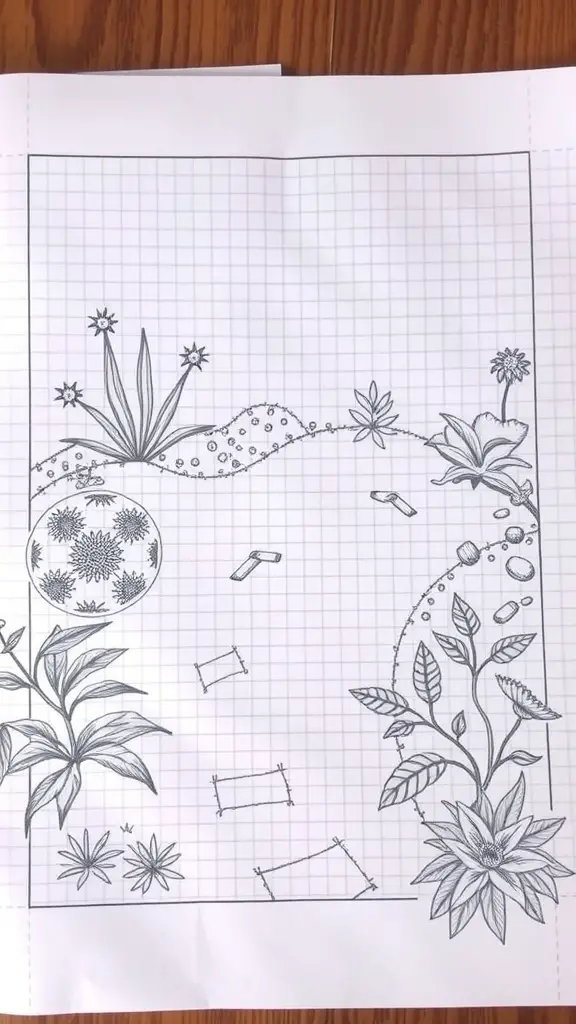
Designing a garden layout can be a fun and rewarding task. The image shows a sketch on graph paper, which is a great way to visualize your garden space. You can see various plants and features outlined, giving a clear idea of how everything might fit together.
Using graph paper helps in planning the dimensions and spacing of plants. The layout includes different types of plants, which can create a diverse and interesting garden. By sketching out your ideas, you can experiment with arrangements before committing to planting.
Consider how sunlight and shade will affect your plants. Placing taller plants at the back and shorter ones in front can create a layered look. This layout also allows for easy access to all areas, making maintenance simpler.
Don’t forget to think about pathways and seating areas. Including these elements can enhance the functionality of your garden. A well-planned layout not only looks good but also makes it easier to enjoy your outdoor space.
Incorporating Vertical Gardening Techniques
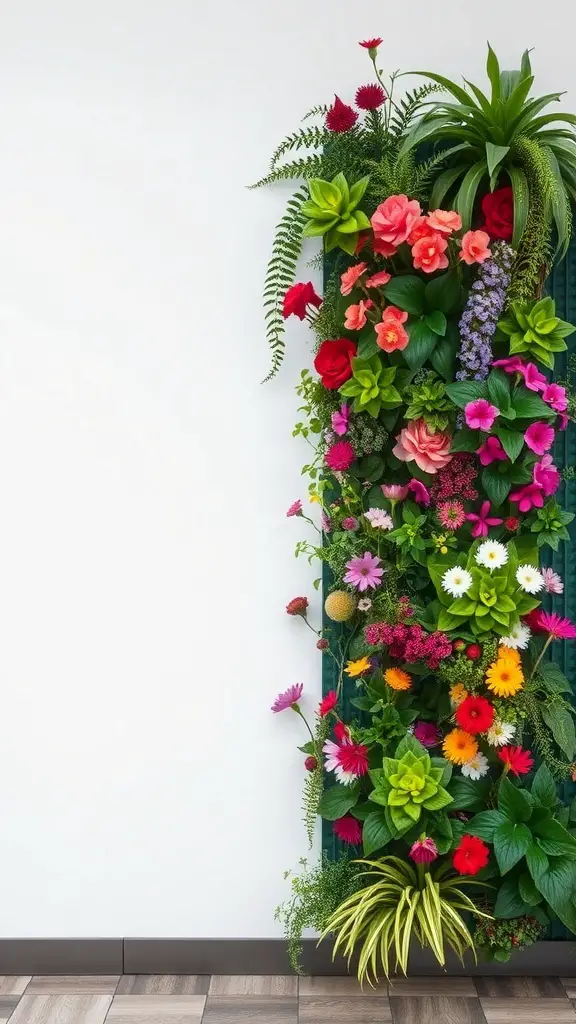
Vertical gardening is a fantastic way to maximize space while adding beauty to your home or garden. The image shows a vibrant vertical garden filled with a variety of colorful flowers and lush greenery. This setup not only looks stunning but also utilizes wall space effectively.
Creating a vertical garden can be as simple as using wall-mounted planters or trellises. You can choose from a mix of flowering plants and leafy greens to create a lively display. The arrangement in the image highlights how different colors and textures can work together to make a striking visual impact.
One of the great benefits of vertical gardening is that it can be done indoors or outdoors. If you’re short on ground space, this technique allows you to grow plants in a compact area. It’s perfect for small patios, balconies, or even indoor spaces.
To get started, think about the plants you love. Consider their light and water needs to ensure they thrive in their vertical home. With a little creativity, you can transform any wall into a green masterpiece!
Designing for Seasonal Blooms
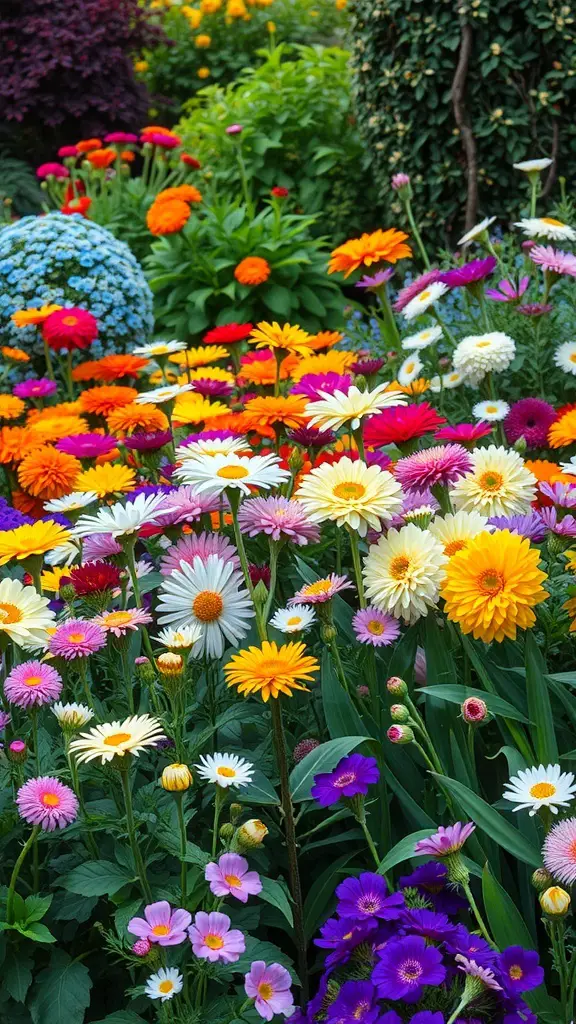
Creating a garden that blooms throughout the seasons is a rewarding experience. The image showcases a vibrant mix of flowers, each bringing its own charm to the landscape. From cheerful daisies to striking purple blooms, this garden is a feast for the eyes.
When planning for seasonal blooms, think about the timing of each flower’s peak. For instance, early spring flowers like tulips can give way to summer favorites like zinnias and dahlias. This ensures your garden remains colorful and lively all year round.
Incorporating a variety of colors and shapes can make your garden visually appealing. The image highlights how different flowers can complement each other, creating a stunning display. Mixing perennials with annuals can also provide a continuous bloom cycle.
Don’t forget about the foliage! Green leaves and shrubs can add texture and depth to your garden, enhancing the beauty of the flowers. Planning for seasonal changes not only beautifies your space but also supports local wildlife.
Utilizing Native Plants for Sustainability
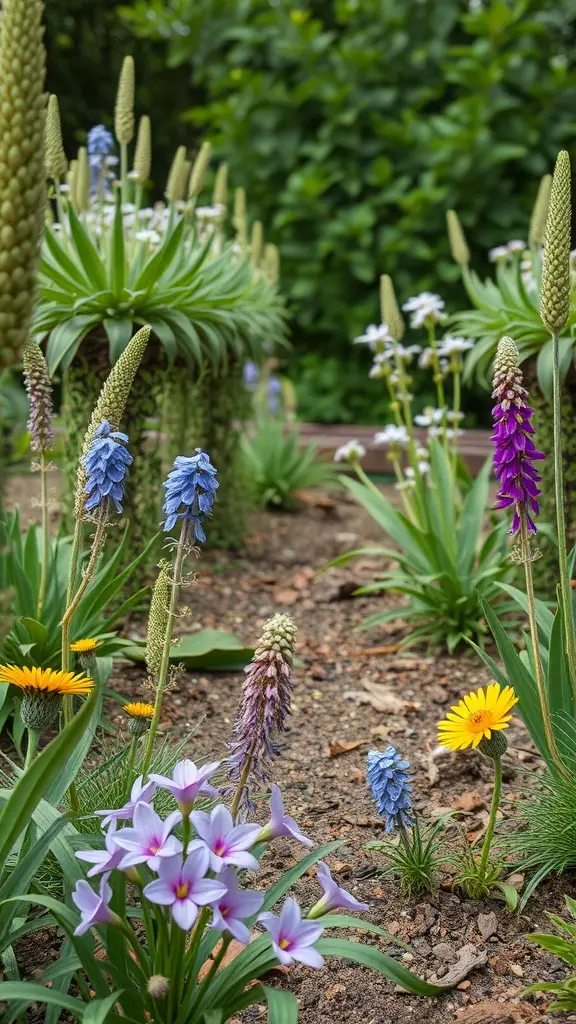
Native plants are a fantastic choice for any garden planning design. They thrive in local conditions, requiring less water and maintenance. This means you can enjoy a beautiful garden while being kind to the environment.
The image shows a vibrant mix of native flowers, showcasing a variety of colors and shapes. These plants not only attract pollinators like bees and butterflies but also support local wildlife. By choosing native species, you create a balanced ecosystem right in your backyard.
Incorporating these plants into your garden can lead to a sustainable landscape. They are adapted to the local climate, which helps reduce the need for fertilizers and pesticides. This approach not only benefits the plants but also the surrounding environment.
Think about how you can include native plants in your next garden project. Whether it’s a small flower bed or a larger landscape, these plants can make a significant impact. Plus, they add a unique charm that reflects the local beauty.
Integrating Water Features into Garden Designs
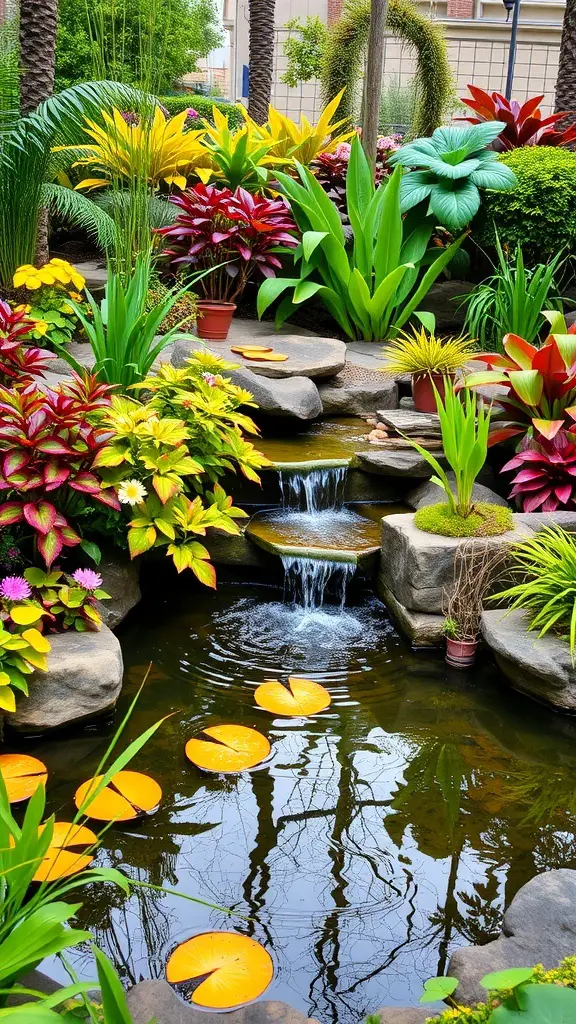
Water features can truly transform a garden into a peaceful retreat. The image showcases a lovely pond surrounded by vibrant plants and flowers. The gentle flow of water creates a soothing sound, inviting relaxation.
Incorporating a pond like this can enhance the overall look of your garden. Notice the colorful lily pads floating on the surface. They add a splash of color and serve as a habitat for local wildlife. This blend of nature and design can make your outdoor space feel alive.
Consider adding rocks around the pond to create a natural look. They can also help with drainage and provide a place for plants to thrive. The variety of foliage seen here, from large leaves to colorful blooms, adds texture and depth to the garden.
Water features can also attract birds and butterflies, making your garden a lively spot. Whether you choose a small fountain or a larger pond, the key is to integrate it seamlessly into your garden design. This creates a cohesive look that feels inviting and serene.
Enhancing Privacy with Strategic Planting
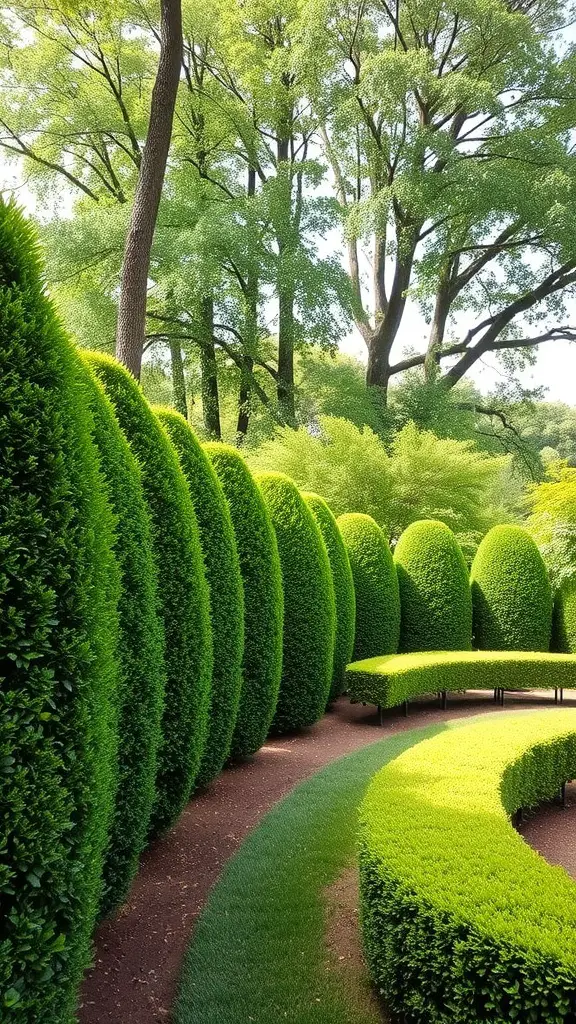
Creating a private space in your garden can be both beautiful and functional. The image showcases a stunning arrangement of lush greenery that forms a natural barrier. These carefully shaped hedges not only add visual interest but also provide a sense of seclusion.
Incorporating plants like these into your garden design can effectively shield your outdoor area from prying eyes. The rounded shapes of the hedges create a soft, inviting atmosphere while ensuring privacy. This can be especially useful in urban settings where space is limited.
When planning your garden, think about how different plants can work together to create layers of privacy. Tall trees can serve as a backdrop, while shorter hedges can define pathways and seating areas. This layered approach not only enhances privacy but also adds depth to your garden.
Consider using a mix of evergreen and flowering plants. Evergreens provide year-round coverage, while flowering plants can add seasonal color and interest. This combination keeps your garden vibrant and inviting throughout the year.
Planning Edible Landscapes
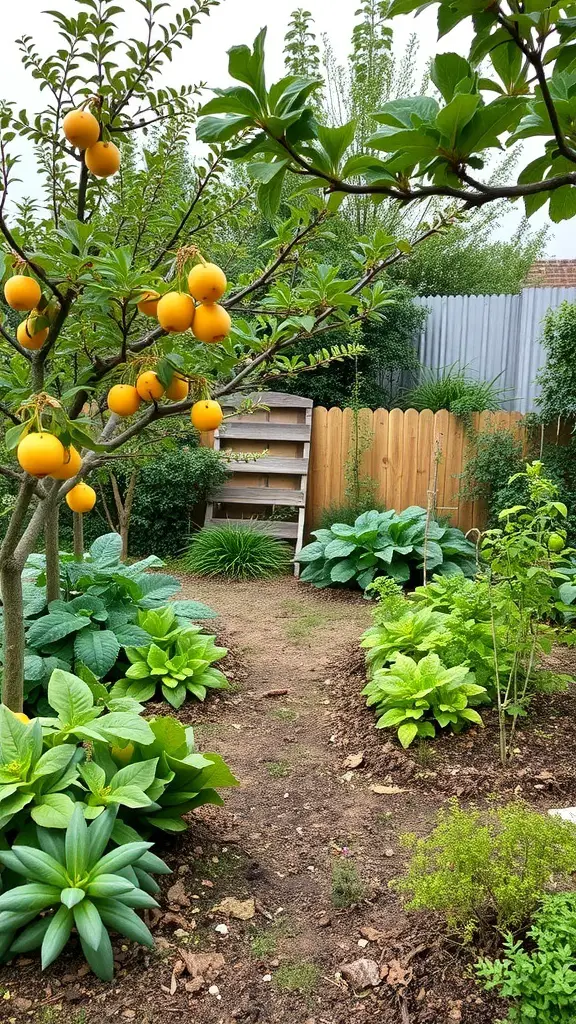
Creating an edible landscape is a fun way to blend beauty with practicality. The image shows a vibrant garden filled with lush greenery and bright yellow fruit hanging from trees. This setup not only looks inviting but also offers fresh produce right at your doorstep.
When planning your edible garden, think about the layout. The path in the image guides you through the greenery, making it easy to access different plants. Consider how you can arrange your plants for both aesthetics and functionality. Grouping plants with similar needs can help them thrive.
Incorporating fruit trees, like the ones in the image, adds height and visual interest. They can provide shade while offering delicious fruits. Surrounding them with leafy greens creates a beautiful contrast and maximizes your harvest.
Don’t forget to include herbs in your design. They can be tucked into corners or planted alongside vegetables. Their scents and flavors can enhance your cooking and attract beneficial insects to your garden.
Remember, planning is key. Take time to sketch out your ideas and think about what you want to grow. With a little creativity, your edible landscape can be both functional and stunning!
Using Color Theory in Garden Design
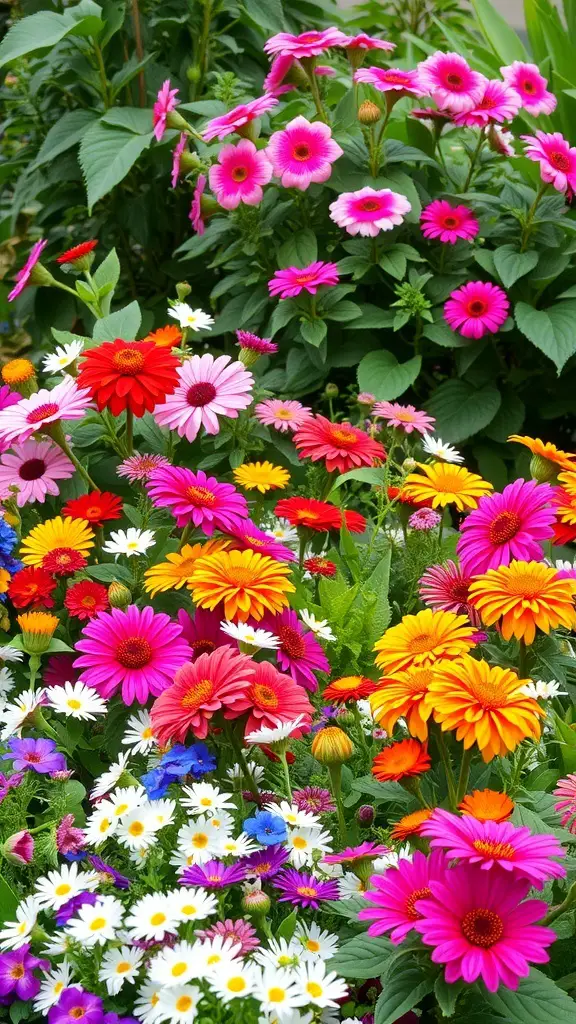
Color plays a big role in how we feel about our gardens. The image shows a lively mix of flowers in bright shades of pink, orange, and white. This vibrant palette can create a cheerful atmosphere that draws people in.
When planning your garden, think about how different colors interact. Warm colors like red and orange can energize a space, while cool colors like blue and purple tend to calm. Mixing these colors can create a balanced and inviting look.
Incorporating a variety of flowers, as seen in the image, can also add depth and interest. The combination of daisies and gerbera daisies creates a playful contrast that can make your garden feel more dynamic. Don’t shy away from experimenting with different shades and textures!
Overall, using color theory in your garden design can enhance the beauty of your space and make it more enjoyable for everyone who visits.
Incorporating Garden Lighting for Ambiance
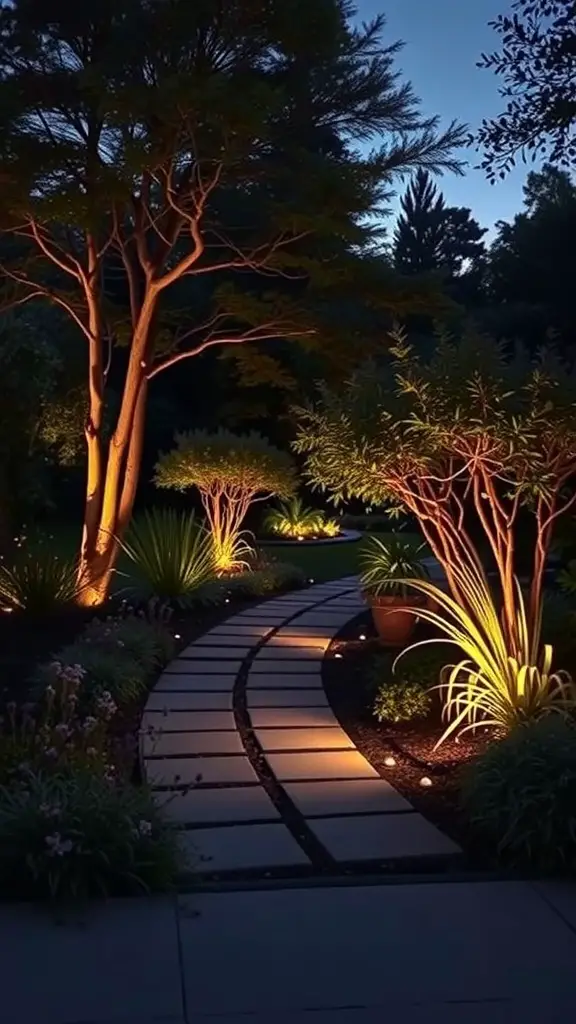
Lighting can completely change the feel of your garden. In the evening, a well-lit garden becomes a magical space. The image shows a beautifully illuminated pathway surrounded by lush greenery. Soft lights highlight the trees and plants, creating a warm and inviting atmosphere.
Consider using different types of lights to enhance your garden’s features. Pathway lights guide the way, while spotlights can draw attention to specific plants or trees. The gentle glow from the lights not only adds safety but also makes the garden a cozy spot for evening gatherings.
When planning your garden lighting, think about the layout. The winding path in the image invites exploration. You might want to mimic this design to create a sense of discovery in your own garden. Experiment with light placement to find what works best for your space.
Lastly, don’t forget about energy efficiency. Solar lights are a great option for those looking to save on electricity. They charge during the day and provide soft lighting at night. This way, you can enjoy your garden without worrying about the energy bill!

